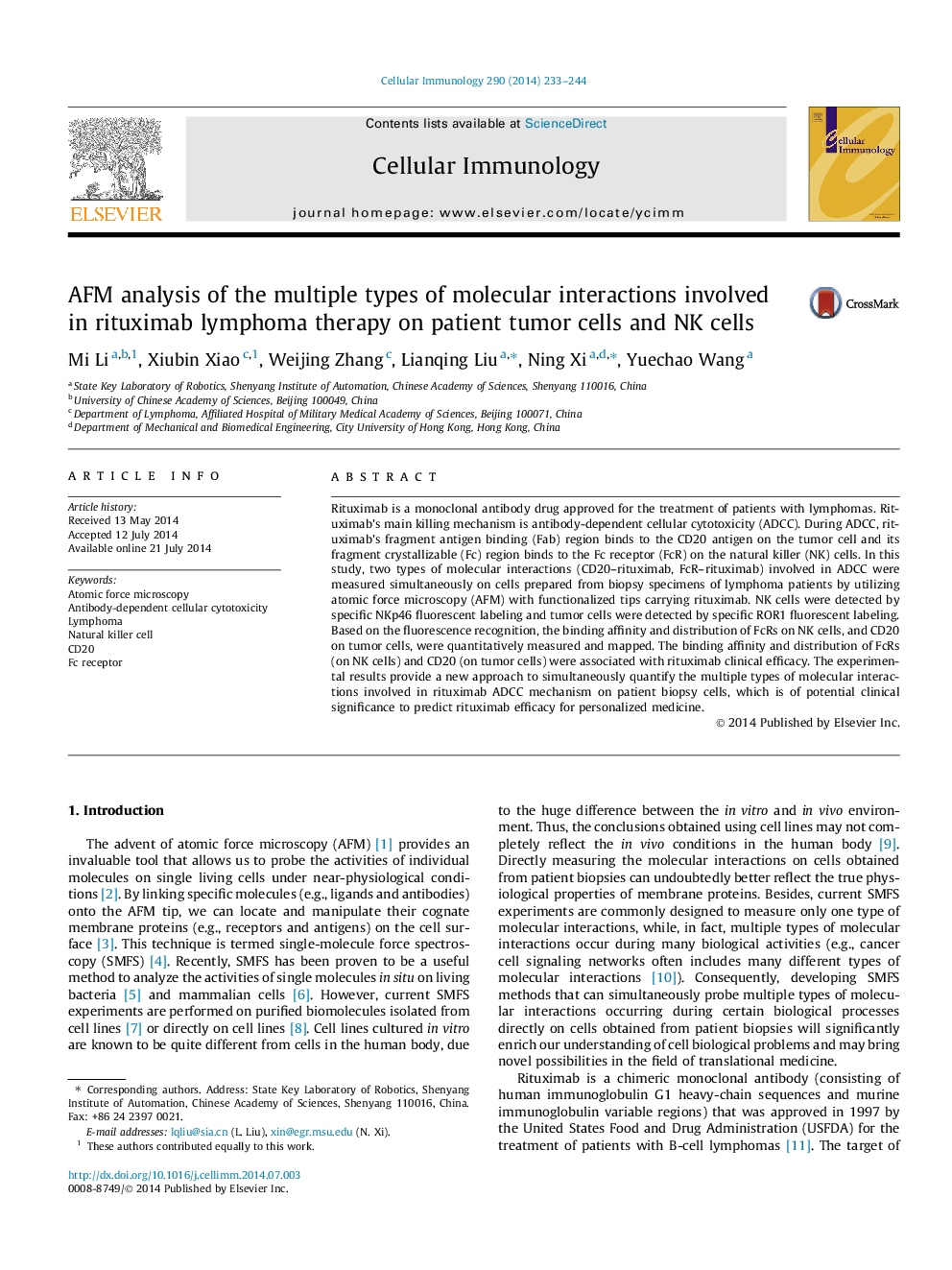| Article ID | Journal | Published Year | Pages | File Type |
|---|---|---|---|---|
| 8463827 | Cellular Immunology | 2014 | 12 Pages |
Abstract
Rituximab is a monoclonal antibody drug approved for the treatment of patients with lymphomas. Rituximab's main killing mechanism is antibody-dependent cellular cytotoxicity (ADCC). During ADCC, rituximab's fragment antigen binding (Fab) region binds to the CD20 antigen on the tumor cell and its fragment crystallizable (Fc) region binds to the Fc receptor (FcR) on the natural killer (NK) cells. In this study, two types of molecular interactions (CD20-rituximab, FcR-rituximab) involved in ADCC were measured simultaneously on cells prepared from biopsy specimens of lymphoma patients by utilizing atomic force microscopy (AFM) with functionalized tips carrying rituximab. NK cells were detected by specific NKp46 fluorescent labeling and tumor cells were detected by specific ROR1 fluorescent labeling. Based on the fluorescence recognition, the binding affinity and distribution of FcRs on NK cells, and CD20 on tumor cells, were quantitatively measured and mapped. The binding affinity and distribution of FcRs (on NK cells) and CD20 (on tumor cells) were associated with rituximab clinical efficacy. The experimental results provide a new approach to simultaneously quantify the multiple types of molecular interactions involved in rituximab ADCC mechanism on patient biopsy cells, which is of potential clinical significance to predict rituximab efficacy for personalized medicine.
Keywords
Related Topics
Life Sciences
Biochemistry, Genetics and Molecular Biology
Cell Biology
Authors
Mi Li, Xiubin Xiao, Weijing Zhang, Lianqing Liu, Ning Xi, Yuechao Wang,
